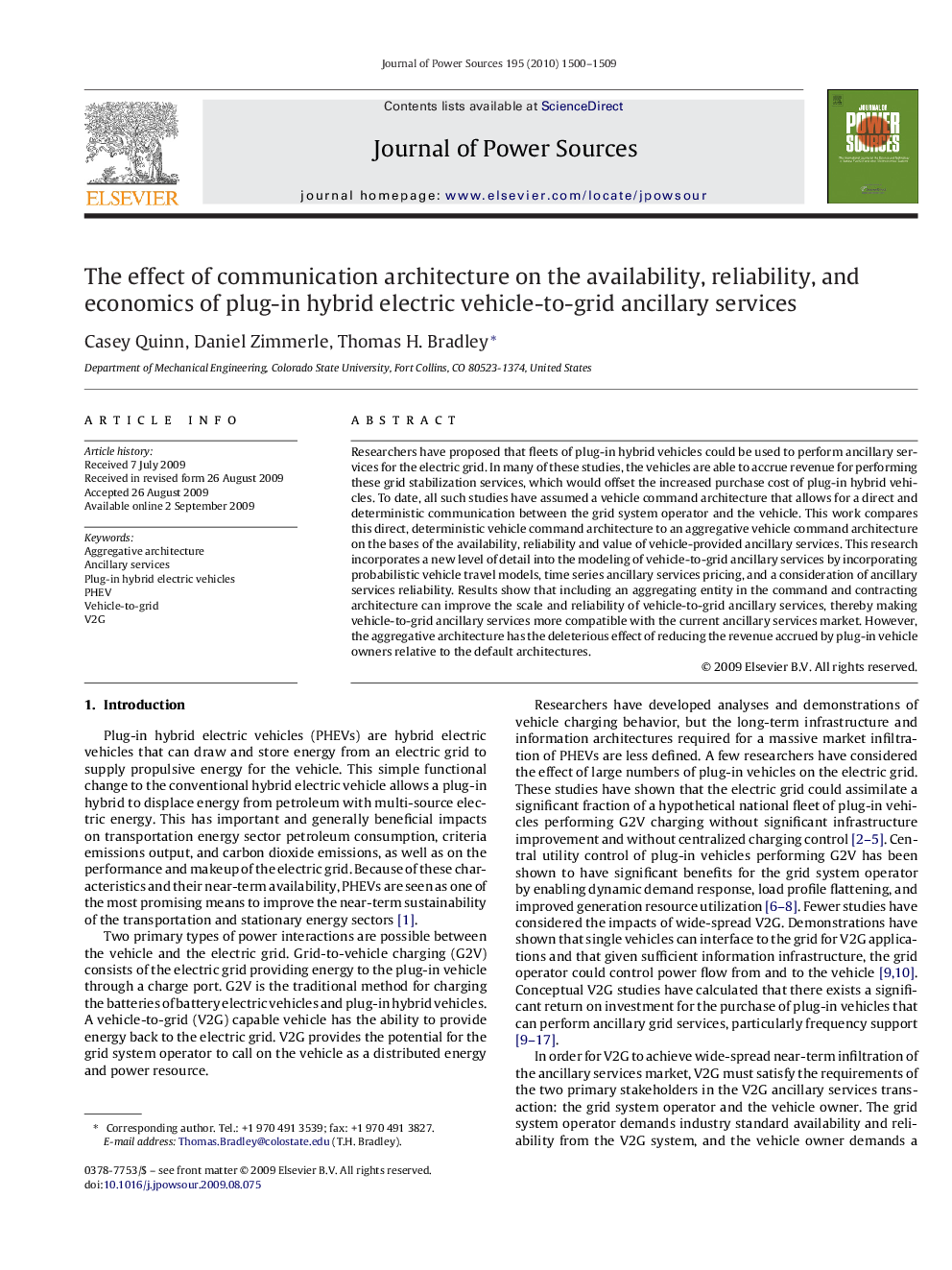| Article ID | Journal | Published Year | Pages | File Type |
|---|---|---|---|---|
| 1293833 | Journal of Power Sources | 2010 | 10 Pages |
Researchers have proposed that fleets of plug-in hybrid vehicles could be used to perform ancillary services for the electric grid. In many of these studies, the vehicles are able to accrue revenue for performing these grid stabilization services, which would offset the increased purchase cost of plug-in hybrid vehicles. To date, all such studies have assumed a vehicle command architecture that allows for a direct and deterministic communication between the grid system operator and the vehicle. This work compares this direct, deterministic vehicle command architecture to an aggregative vehicle command architecture on the bases of the availability, reliability and value of vehicle-provided ancillary services. This research incorporates a new level of detail into the modeling of vehicle-to-grid ancillary services by incorporating probabilistic vehicle travel models, time series ancillary services pricing, and a consideration of ancillary services reliability. Results show that including an aggregating entity in the command and contracting architecture can improve the scale and reliability of vehicle-to-grid ancillary services, thereby making vehicle-to-grid ancillary services more compatible with the current ancillary services market. However, the aggregative architecture has the deleterious effect of reducing the revenue accrued by plug-in vehicle owners relative to the default architectures.
